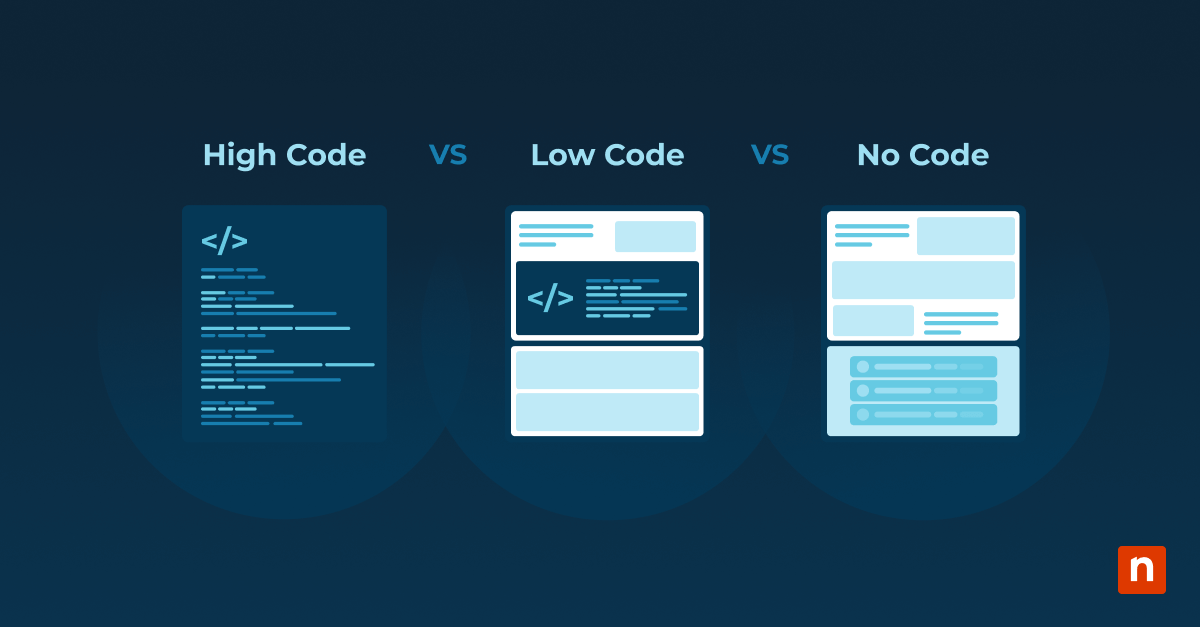Introducing new IT tools to your business can boost efficiency and streamline operations, but the success of these tools often depends on how well your team adapts to them. Proper training is essential to ensure employees not only understand how to use the new systems but also feel confident integrating them into their daily routines. In this article, we’ll explore key strategies for training employees on new IT tools to help minimize disruptions, increase productivity, and ensure a smooth transition.
The importance of training in IT tool adoption
Proper training plays a critical role in the successful adoption of new IT tools, directly impacting productivity and tool utilization. Employees who undergo comprehensive training are more likely to use the full capabilities of a new tool, maximizing efficiency and reducing frustration. Without adequate training, staff may rely only on basic functions, leading to underutilization and missed opportunities.
Training also reduces the likelihood of errors and security risks. When employees aren’t fully trained, they’re more prone to making mistakes, whether through misconfiguration, incorrect usage, or failure to follow security protocols. This can result in everything from data breaches to downtime. A well-structured training program helps minimize these risks by ensuring employees understand both the functional and security aspects of the new tools.
Inadequate training can lead to numerous pitfalls. For example, employees might develop workarounds or continue using outdated methods, reducing the overall efficiency gains from the new technology. Additionally, poor understanding of security protocols could expose the company to cyberattacks or compliance issues. One real-world example is the infamous Target breach in 2013, where weak employee training and vendor access protocols contributed to the attack, costing the company millions. Proper training would have mitigated these risks, underscoring its importance in IT tool adoption.
Pre-training preparation
Before IT onboarding, it’s essential to lay the groundwork to ensure training is both effective and relevant. Proper preparation helps tailor the training process to your employees’ needs, ensuring a smoother adoption of new IT tools.
Assessing the current skill levels of employees is the first step in this process. Understanding your team’s existing proficiency with similar tools or technology will allow you to customize the training to fill knowledge gaps without wasting time on topics they’re already familiar with. Surveys, IT skills assessments, or one-on-one meetings with team members can provide insights into their technical capabilities.
Next, it’s important to identify the goals and objectives of the training. What specific skills should employees gain? How will these skills support your organization’s overall goals? Setting clear objectives ensures that the training remains focused and that you can measure success afterward. Whether the goal is to increase efficiency, reduce errors, or enhance security practices, having a well-defined purpose keeps the training aligned with your organization’s priorities.
Choosing the right tools is another key step. Selecting the right IT tools based on organizational needs means understanding the problems your business is trying to solve and ensuring the tool fits within the broader workflow. A tool that offers more features than necessary may overwhelm users, while a limited tool may not meet your long-term needs. Involving key stakeholders in this decision-making process can ensure that the selected tools align with the specific needs of your business.
Once these elements are in place, it’s time to create a training plan. This plan should include realistic timelines, the resources required (such as trainers, documentation, and support staff), and key milestones to track progress. Breaking down the training into phases, such as introductory sessions, hands-on practice, and follow-up assessments, helps ensure a structured approach. Regular feedback and review checkpoints will help gauge progress and adjust the training plan as needed. Proper planning sets the stage for a successful IT tool rollout, ensuring employees are fully prepared and confident in using the new systems.
Developing an effective IT training program
Building employee training for IT tools involves selecting the right methods, trainers, and materials to ensure that employees not only understand the new technology but also feel confident using it. A well-structured program considers the diverse needs of employees and offers various learning approaches to foster engagement and retention.
Choosing the right training methods
Different training methods cater to various learning styles and organizational needs. Workshops are ideal for group learning, offering an interactive environment where employees can ask questions and immediately apply what they’ve learned. This method works well for introducing new concepts and fostering collaboration. E-learning is another option, particularly for teams with remote workers or employees who need flexible schedules. E-learning platforms allow employees to learn at their own pace, and materials can be revisited as needed. Hands-on sessions are crucial for IT tool training. Allowing employees to practice using the tools in real-world scenarios gives them practical experience and boosts confidence in applying the tools to their daily tasks.
The role of internal vs. external trainers
Deciding between internal and external trainers depends on the complexity of the tool and the organization’s specific needs. Internal trainers—typically IT staff or department heads—understand the company’s processes and can tailor the training to meet those specific requirements. They also offer ongoing support post-training, ensuring continuity. External trainers, on the other hand, bring specialized knowledge about the tool itself and can provide insights on best practices that might not be immediately obvious. They also bring an outside perspective, which can sometimes be beneficial in offering new strategies for tool usage. For many organizations, a combination of both internal and external trainers works best, ensuring comprehensive training from both a technical and organizational perspective.
Creating training materials
A successful IT training program requires comprehensive and accessible materials. User manuals serve as a foundational resource, offering detailed instructions and explanations of the tool’s features. Video tutorials are particularly effective for visual learners, guiding employees through the tool’s usage step-by-step. Additionally, quick reference guides provide a convenient, at-a-glance resource for common tasks, troubleshooting tips, and shortcuts. These materials should be easy to access, whether through an internal portal or shared document system, and regularly updated to reflect new features or updates in the tool.
Tips for engaging and motivating employees
Keeping employees engaged during training is essential for its success. Start by explaining how the new IT tools will benefit their roles—whether through streamlining tasks, saving time, or reducing errors—so they understand the value of learning the tool. Incorporating interactive elements like live demonstrations, quizzes, or practical exercises helps keep sessions dynamic and encourages participation. Consider offering incentives or recognition for completing training, such as certificates, rewards, or even gamifying the process with team competitions. Creating a supportive environment where questions are encouraged and employees feel comfortable seeking help is also crucial to fostering a positive learning experience. The more engaged and motivated employees are during training, the more likely they are to adopt and effectively use the new IT tools.
Implementing the training program
Once your training program is developed, the next step is implementing it effectively across the organization. Rolling it out smoothly requires careful planning — and gathering feedback to make improvements along the way.
Steps to roll out the training program
Begin by creating a phased rollout plan to introduce the training program. Depending on the size of the organization, you may want to start with small groups or pilot teams before expanding it company-wide. This allows for fine-tuning the program based on initial feedback and troubleshooting any logistical issues. Clear communication is key—ensure that all employees understand the timeline, training goals, and their role in the process.
Scheduling training sessions to minimize disruption
To avoid disruptions to daily operations, schedule training sessions during off-peak hours or stagger them so employees can attend in manageable groups. If possible, use a flexible schedule that allows employees to complete e-learning modules at their own pace, while reserving workshops or hands-on sessions for times that won’t conflict with critical deadlines. Collaboration with department heads and managers will ensure that employees are available for training without causing bottlenecks in regular workflows.
Ensuring access to necessary resources
Successful training requires ensuring that employees have access to all the necessary resources, such as computers, updated software, and training platforms. Verify that all software and tools are installed and properly functioning before training begins. For hands-on sessions, make sure that the training environment mirrors the actual work environment so employees can practice in a realistic setting. If employees are accessing e-learning platforms, ensure they have the required logins and can easily navigate the content.
Monitoring progress and gathering feedback
Throughout the training process, it’s essential to monitor progress and gather feedback to ensure the program is meeting its goals. Encourage employees to provide feedback about the training content and delivery through surveys or informal conversations. This feedback is invaluable for making real-time adjustments, improving training effectiveness, and ensuring that employees feel supported throughout the process.
Post-training support and continuous learning
Once training is complete, ongoing support is crucial for long-term success. Setting up a helpdesk or support system ensures employees have access to immediate assistance when needed. This reduces downtime and prevents small issues from becoming bigger problems.
To foster growth, encourage a culture of continuous learning by promoting regular IT skill development. Employees should feel comfortable exploring new features and asking questions.
Offering periodic refresher courses keeps employees up-to-date on tool changes or new features, ensuring they stay proficient.
Finally, track performance to measure the training program’s effectiveness. Regular assessments, employee feedback, and performance reviews can highlight areas for improvement.
Case studies and examples of IT training
One example of effective IT training comes from a global retail company that introduced a new inventory management system. They implemented a blended training approach using workshops, e-learning, and hands-on sessions, leading to a ~25% increase in operational efficiency within six months. Their success was attributed to a phased rollout and strong post-training support.
On the flip side, a financial services firm struggled with adopting new customer management software due to inadequate training. Employees lacked guidance on using advanced features, resulting in poor utilization and a costly return to legacy systems. This underscores the importance of thorough training and ongoing support for successful IT tool adoption.
Challenges and solutions in IT training
Training employees on new IT tools often comes with challenges. Resistance to change is a common obstacle, as employees may feel overwhelmed or uncertain about using new systems. To overcome this, emphasize the benefits of the tools, such as how they will simplify tasks or improve workflow. Involving employees early in the process and addressing their concerns can also help ease the transition.
Limited resources, like time or budget constraints, can hinder training effectiveness. One solution is to adopt flexible, cost-effective options like e-learning, which allows employees to learn at their own pace without heavy financial or time investment. For more personalized learning, supplement e-learning with targeted workshops or one-on-one sessions for key staff members.
Different employees often have varying learning paces and styles. To address this, offer diverse training methods—visual learners might benefit from video tutorials, while hands-on learners thrive in practice sessions. Tailoring the training to accommodate different needs ensures everyone can keep up, increasing overall tool adoption and success.
Measuring training success
Evaluating the effectiveness of IT training programs is essential to ensure long-term success. Key metrics for measuring success include increased productivity, reduced errors, higher adoption rates, and improved employee confidence in using the new tools. Tracking these metrics over time provides valuable insight into the impact of the training on daily operations.
To gather feedback, use tools and techniques like post-training surveys, quizzes, and performance assessments. These can capture both quantitative data (like completion rates and time spent using the tool) and qualitative feedback on employee experiences and challenges. Anonymous surveys can encourage honest input, giving you a clearer picture of any gaps in the training process.
Using these metrics and feedback, you can refine future training efforts. If certain areas of the tool are underutilized or employees continue to struggle, adjust the training content or method to better address these pain points. Regular reviews and updates to the training program ensure it remains effective as your tools and business needs evolve.
In summary
A well-executed training program is essential for the successful adoption of new IT tools in any organization. From careful preparation and choosing the right methods to providing ongoing support and measuring success, each step plays a critical role in ensuring employees are equipped to maximize the benefits of these tools.
By addressing challenges proactively and fostering a culture of continuous learning, organizations can ensure positive, long-term IT tool adoption. With the right approach, your team will be confident and empowered to use new technology effectively, driving both individual and organizational success.








